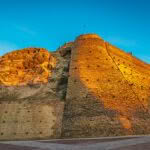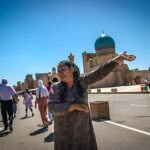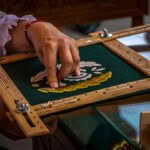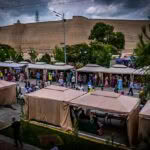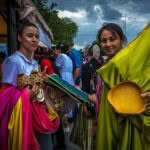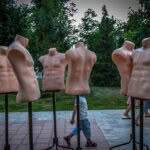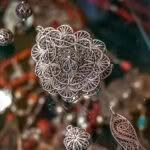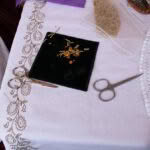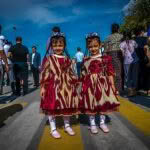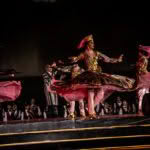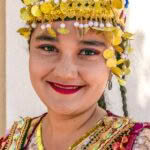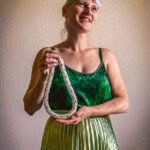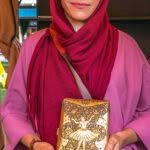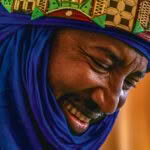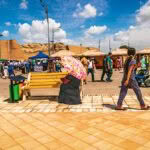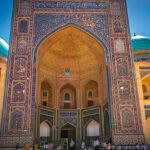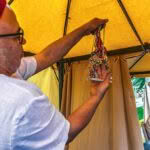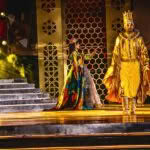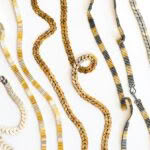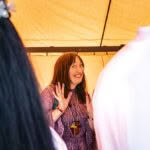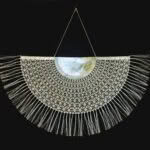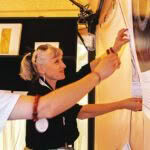Photo essay: Three Kiwi artisans shine at Uzbekistan’s first-ever International Gold Embroidery and Jewelry Festival
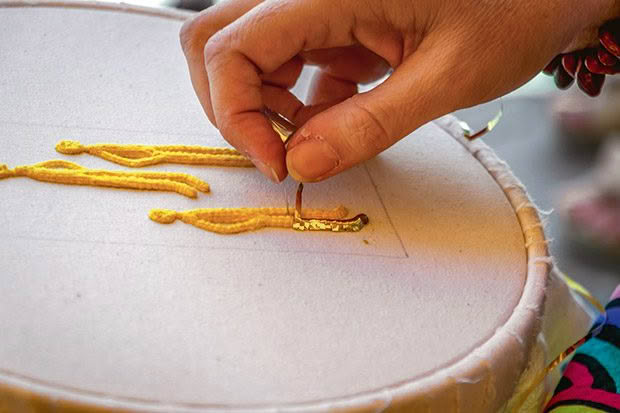
Jo Dixey’s goldwork, popular for religious vestments in mediaeval Europe, is an ancient craft involving gold, silver or metal thread.
The creative endeavours — goldwork, jewelry and flax-derived lace — of three Antipodean artisans shine brightly at Uzbekistan’s new folk-art festival.
Words: Cari Johnson Photos: Serena Stevenson
Some 2000 years ago, merchants hauled their treasures along Silk Road trade routes to the settlement of Bukhara, now the fifth-largest city in Uzbekistan. One can only imagine reaching the ancient Persian mecca after nothing but solitude and sand in the cruel-but-beautiful Kyzylkum Desert.
The fortified citadel has been revered by merchants, artisans, adventurers and scholars and, over the centuries, passed through the hands of Alexander the Great, the Turkic Khaganate, and even Genghis Khan.
- The festival was hosted at the base of a fifth-century fortress called the Ark of Bukhara. The “city within a city” is aptly nicknamed for its grandiose interiors and location at the heart of the ancient Islamic city.
- Beside the festival Uzbek people dance in the street near the Kalyan Mosque and Minaret.
- Gold embroidery demonstration.
- Stalls set beside The Ark.
- Young Uzbek performers amongst the festival setting.
- Spare mannequins.
- Detail of Tunisian silver and coral jewelery.
- Embroidery demonstration. The festival was organized by the “Hunarmand” Association of Uzbekistan, upon the initiative of H.E. Shavkat Mirziyoev, President of the Republic of Uzbekistan.
- Uzbek children in dresses of traditional handwoven silk adras.
- The festival’s closing ceremony performance.
Fast forward a few millennia for a spectacle reminiscent of Bukhara’s past. For four days earlier this year, nearly 300 artists from around the globe unpacked their wares at the first-ever International Gold Embroidery and Jewelry Festival (known locally as the Zar Festival), a new biennial extravaganza aimed at developing gold embroidery and jewelry traditions in folk-applied arts.
Representing New Zealand were Helensville gold embroiderer Jo Dixey, Auckland jeweler Joanna Campbell and Northland lace textile artist Rowan Panther, the artists selected by Mahi ā Ringa, Craft New Zealand Aotearoa.
- A young Uzbek adorned in traditional costume.
- Auckland glass artist Layla Walter (a representative of Mahi ā Ringa, Craft New Zealand Aotearoa) holds a Namibian roll necklace made by the indigenous San people using ostrich eggshell beads, each made by hand. “Connecting with other cultures, with people who are steeped in the craft tradition, is a way of engaging in a human understanding that has a language which isn’t verbal,” she says.
- Iranian jeweler Somayeh Arbabi has a master’s degree in Islamic art.
- Tuareg silversmith Mohamed El Mouloud Ag Hamid, general manager of Association Timidwa, represents artisans from Timbuktu in Mali.
- A local market hums with colour, texture and activity at the foot of the Ark of Bukhara. Bukhara is considered one of the most preserved mediaeval towns in Central Asia and is listed as a UNESCO World Heritage Site.
- Kalyan Mosque was completed in 1514 and is part of one of the oldest religious complexes in Central Asia. Adjacent to the mosque is Kaylan Minaret, a 48-metre-tall baked-brick tower constructed in 1127 to call city Muslims to prayer five times a day. It was the only building Genghis Khan spared when he invaded in 1220. Since then, the minaret has been used as an observatory, a watchtower and, in its grimmest days, as a site for public execution, earning it the name, the “Tower of Death”.
- Tunisian artisan specializing in silver and coral jewelry.
- Performers at the festival’s lavish closing ceremony.
During the festival, the base of the ancient Ark of Bukhara came to life like a lively bazaar. The trio of New Zealanders waded through a kaleidoscope of colour, culture, and unusual materials. Sharing their techniques and watching others work, they also discovered kinship through a universal language older than Bukhara itself.
THREE KIWI ARTISTS
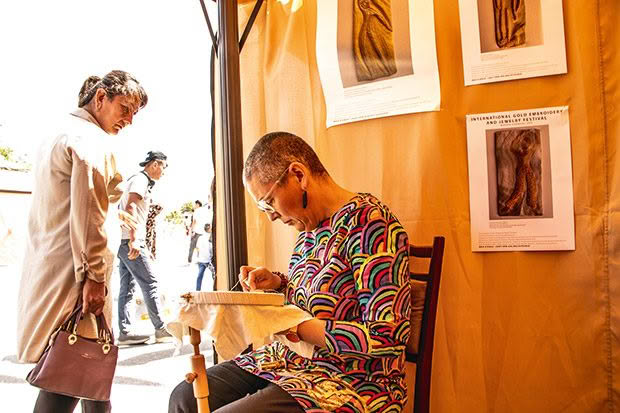
When not teaching workshops or exhibiting her work, Jo has been known to work in the costume department for projects such as Mulan and the Lord of the Rings television series.
Crowds flocked to the New Zealand stall to see the goldwork of Jo Dixey, a Britain-born embroiderer who apprenticed at England’s Royal School of Needlework in the 1990s. Jo takes a contemporary approach to traditional needlework techniques, often combining metal threads with cotton. “She’s very good,” noted an Uzbek tutor (via an interpreter) when Jo began stitching in a workshop. Despite the language barrier, Jo felt their bond over technique was instant.
- If goldwork gives metal fluidity and movement, then Waitākere jeweler Joanna Campbell’s fabric-like pieces are in a similar vein.
- Here Joanna wears a colourful embroidered pendant by Auckland crafter Bronwyn Lloyd.
Jeweler Joanna Campbell, who teaches at Auckland’s Whitecliffe College and has helped accessorize films such as The Last Samurai, mixes sterling silver and 18-carat gold to mimic lace and textiles — like draped ribbon or a delicate string of sequins. Joanna’s wearable works look at home in Bukhara, where maximalist ornamentation is en vogue. Take only a few steps into the ancient city to see entrances embellished with ceramic tiles and elderly Uzbek women proudly wearing sparkles and colour. Joanna notes that the Modernist movement involved the rejection of ornamentation and decoration in Western culture, which is quite the opposite in Uzbekistan.
- Move over, doilies. These wearable lace adornments by Northland artist Rowan Panther are crafted with muka, a raw fibre derived from harakeke (flax). Rowan Panther, Pacific lei (800mm x 550mm), bobbin lace made of muka and sterling silver.
- Rowan (left) and Auckland glass artist Layla Walter (a representative of Mahi ā Ringa, Craft New Zealand Aotearoa) set up the New Zealand stall.
Northland artist Rowan Panther considers colonization and her heritage (Irish, English and Samoan) in her interpretation of traditional European lace-making, using contemporary shapes and motifs inspired by the wider Moana Oceania. Her wearable laces are crafted with muka, a raw fibre derived from harakeke (flax).
Love this story? Subscribe now!
 This article first appeared in NZ Life & Leisure Magazine.
This article first appeared in NZ Life & Leisure Magazine.
